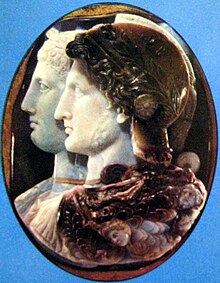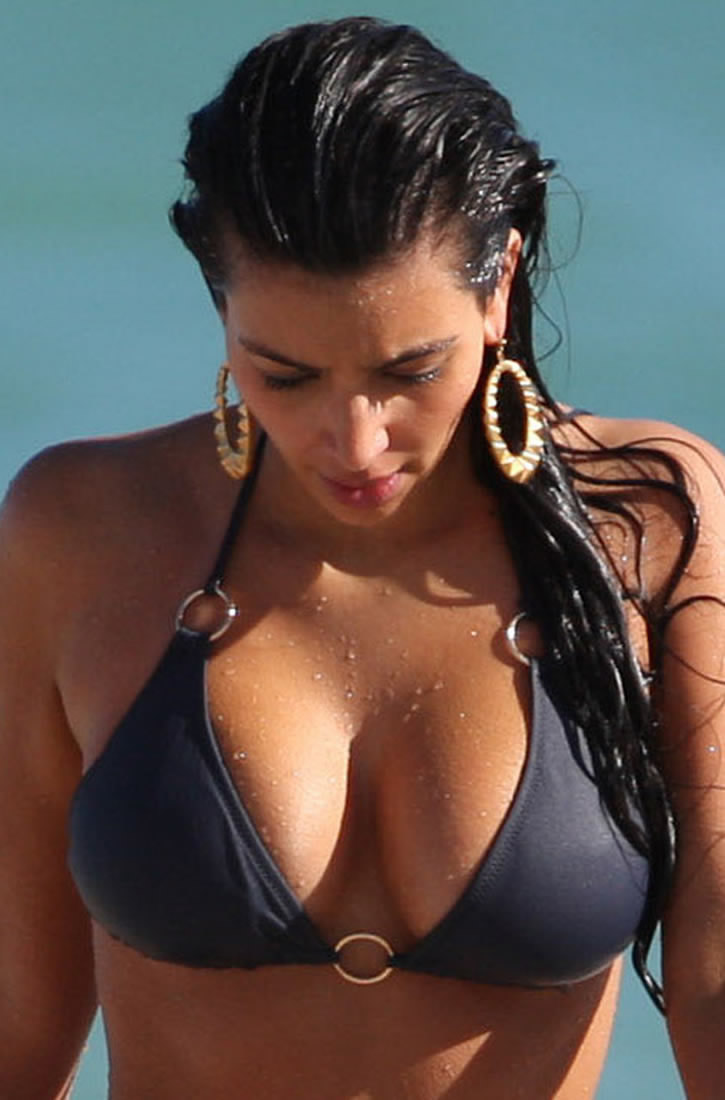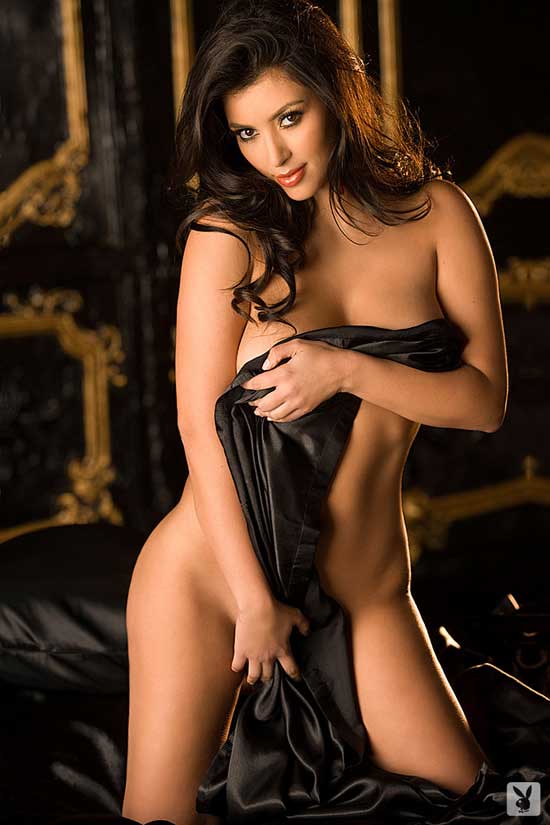|
|
|---|
Tuesday, October 19, 2010
Hermitage Museum One Of The Largest and Oldest Museum In The World
Art Museums and Galleries question: What is the largest museum in the world? It is The Hermitage Museum in Saint-Petersburg, Russia. In terms of floor space for this reason.
This is an article about the 16 top Museums of the World: Musee du Louvre, Metropolitan Museum of Art, Vatican Museums, Uffizi Gallery, Prado, Museum.
20 Dec 2006 ... Visit The biggest museum in the World? Travel information with tips and suggestion how to spend best time there!
The best museums are sources of fascinating information and works of art - exploring a museum is the closest we can get to time travel. The great museums ...
The Smithsonian, Washington, DC - the world's largest museum complex and research organization composed of 16 museums and the National Zoo in the Washington ...
Little did Robert Dale Owen of New Harmony, Indiana, know that the bill he introduced to Congress would establish the world's largest museum complex.
For other uses, see Hermitage (disambiguation).
Coordinates: 59°56′28″N 30°18′46″E / 59.941°N 30.3129°E / 59.941; 30.3129
59°56′28″N 30°18′46″E / 59.941°N 30.3129°E / 59.941; 30.3129| State Hermitage Museum | |
|---|---|
 Entrance to the museum | |
| Established | 1764 |
| Location | 38 Palace Embankment, Saint Petersburg, Russia |
| Visitor figures | 2,426,203 (2009)
|
| Director | Mikhail Piotrovsky |
| Website | www.hermitagemuseum.org |
The State Hermitage (Russian: Государственный Эрмитаж) is a museum of art and culture in Saint Petersburg, Russia. One of the largest and oldest museums of the world, it was founded in 1764 by Catherine the Great and open to the public since 1852. Its collections, of which only a small part is on permanent display, comprise nearly 3 million items, including the largest collection of paintings in the world. The collections occupy a large complex of six historic buildings along Palace Embankment, including the Winter Palace, a former residence of Russian emperors. Apart from them, the Menshikov Palace, Museum of Porcelain, Storage Facility at Staraya Derevnya and the eastern wing of the General Staff Building also make part of the museum. The museum has several exhibition centers abroad. The Hermitage is a federal state property. Since 1990, the director of the museum has been Mikhail Piotrovsky.
Out of six buildings of the main museum complex, four, namely the Winter Palace, Small Hermitage, Old Hermitage and New Hermitage, are partially open to the public. The other two are Hermitage Theatre and the Reserve House. The entrance ticket for foreign tourists costs several times as much as the fee paid by Russian citizens. However, the entrance is free of charge the first Thursday of every month for all visitors and daily for students and children. The museum is closed on Mondays. Entrance is in the Winter Palace from Palace Embankment or the Courtyard.
Buildings-
Originally, the only building housing the collection was the Small Hermitage. Today, the Hermitage Museum encompasses many buildings on the Palace Embankment and it's neighbourhoods. Apart from the Small Hermitage, the museum now also includes the Old Hermitage (also called Large Hermitage), the New Hermitage, the Hermitage Theatre, and the Winter Palace, the former main residence of the Russian tsars. In recent years, the Hermitage has expanded to the General Staff Building on the Palace Square in front of the Winter Palace, and the Menshikov Palace.
Collections-
The Western European Art collection includes European paintings, sculptures, applied art from the 13th to the 20th century and is on display in about 120 rooms on the first and second floor in the four buildings. Drawing and prints are displayed in temporary exhibitions.Egyptian antiquities-
Main article: Egyptian Collection of the Hermitage Museum

Classical antiquities-
The collection of Classical Antiquities occupy most of the ground floor of the Old and New Hermitage buildings. The interiors of the ground floor were designed by German architect Leo von Klenze in the Greek revival style in the early 1850s, using painted polished stucco and columns of natural marble and granite. One of the largest and most notable interiors of the first floor is the Hall of Twenty Columns, divided into three parts by two rows of grey monolithic columns of Serdobol granite, intended for the display of Graeco-Etruscan vases. Its floor is made of a modern marble mosaic imitating ancient tradition, stucco walls and ceiling are covered in painting.The Room of the Great Vase in the western wing features the 2.57 m high Kolyvan Vase, weighting 19 tonnes, made of jasper in 1843 and installed there before the walls were erected. While the western wing was designed for exhibitions, the rooms on the ground floor in the eastern wing of the New Hermitage, now also hosting exhibitions, were originally intended for libraries. The floor of the Athena Room in the south-eastern corner of the building, one of the original libraries, is decorated with an authentic 4th-century mosaic excavated in an early Christian basilica in Chersonesos in 1854.

A red-figure vase in the Hall of Twenty Columns
Prehistoric art-
On the ground floor in the western wing of the Winter Palace the collections of prehistoric artifacts and the culture and art of the Caucasus are located, as well as the second treasure gallery. The prehistoric artifacts date from the Paleolithic to the Iron Age and were excavated all over Russia and other parts of the former Soviet Union and Russian Empire. Among them is a renowned collection of the art and culture of nomadic tribes of the Altai from Pazyryk and Bashadar sites, including the world's oldest surviving knotted pile carpet and a well-preserved wooden chariot, both from the 4th–3rd centuries BC. The Caucasian exhibition includes a collection of Urartu artifacts from Armenia and Eastern Turkey. Many of them were excavated at Teishebaini under the supervision of Boris Piotrovsky, former director of the Hermitage Museum.Jewellery and decorative art-
Four small rooms on the ground floor, enclosed in the middle of the New Hermitage between the room displaying Classical Antiquities, comprise the first treasure gallery, featuring western jewellery from the 4th millennium BC to the early 20th century AD. The second treasure gallery, located on the ground floor in the southwestern corner of the Winter Palace, features jewellery from the Pontic steppes, Caucasus and Asia, in particular Scythian and Sarmatian gold. Only guided visits to the treasure galleries are allowed.
The Pavilion Hall
On the first floor, the Pavilion Hall, designed by Andrei Stakenschneider in 1858, occupies the Northern Pavilion of the Small Hermitage. It features the 18th-century golden Peacock Clock by James Cox and a collection of mosaics. The floor of the hall is adorned with a 19th-century imitation of an ancient Roman mosaic.
Two galleries running along the western side of the Small Hermitage from the Northern to Southern Pavilion house an exhibition of Western European decorative and applied art of the 12th to 15th century and the fine art of the Low Countries from the 15th and 16th centuries.
Italian Renaissance-
The rooms on the first floor of the Old Hermitage were designed by Andrei Stakenschneider in revival styles in 1851-1860, although the design survived only in some of them. They feature works of Italian Renaissance artists, including Giorgione, Titian, Veronese, as well as Benois Madonna and Madonna Litta attributed to Leonardo da Vinci or his school.
Italian and Spanish fine art-
There are three large interiors with red walls lit by a skylight from above enclosed in the middle of the Hermitage complex on the first floor of the New Hermitage. They are adorned with 19th-century Russian lapidary works and feature Italian and Spanish canvases of the 16th-18th centuries, including Veronese, Tintoretto, Velázquez and Murillo. In the enfilade of smaller rooms alongside the skylight rooms the Italian and Spanish fine art of the 15th-17th centuries, including Michelangelo's Crouching Boy and paintings by El Greco.Knight's Hall-
The Knights' Hall, a large room in the eastern part of the New Hermitage originally designed in the Greek revival style for the display of coins, now hosts a collection of Western European arms and armour of the 15th-17th centuries, part of the Hermitage Arsenal collection. The Hall of Twelve Columns in the southeastern corner of the New Hermitage, adorned with columns of grey Serdobol granite, which is also designed in the Greek revival style and was originally intended for the display of coins, is now used for temporary exhibitions.
Dutch Golden Age and Flemish Baroque-

The Rubens Room.
German and French fine art-
On the first floor of the Winter Palace rooms along the southern facade are occupied by the collections of German fine art of the 16th century and French fine art of the 15th–18th centuries, including paintings by Poussin, Lorrain, Watteau. The collections of French decorative and applied art from the 17th–18th centuries and British applied and fine art from the 16th–19th century, including Thomas Gainsborough and Joshua Reynolds, are on display in nearby rooms facing the courtyard.Russian art-
The richly decorated interiors of the first floor of the Winter Palace on its eastern, northern and western sides are part of the Russian culture collection and host the exhibitions of the Russian art of the 11th-19th centuries. Temporary exhibitions are usually held in the Nicholas Hall.Neoclassical, Impressionist, and post-Impressionist art-

Modern art is on display in the rooms on the southern side of the second floor. It features Matisse, Derain and other fauvists, Picasso, Malevich, Kandinsky, Giacomo Manzù and Rockwell Kent. A small room is devoted to the German Romantic art of the 19th century, including several paintings by Caspar David Friedrich. The Western wing on the second floor features collections of the Oriental art (from China, India, Mongolia, Tibet, Central Asia, Byzantium and Near East).
Gallery of Modern Art in the Hermitage
Henri Matisse, André Derain, Wassily Kandinsky
 Henri Matisse, Blue Pot and Lemon (1897) |  Henri Matisse, Fruit and Coffeepot (1898) |  Henri Matisse, Dishes and Fruit (1901) |  Henri Matisse, Vase, Bottle and Fruit (1906) |
 Henri Matisse, Vase of Sunflowers (1898) |  Henri Matisse, Crockery on a Table (1900) |  Henri Matisse, Luxembourg Gardens (1901) |  Henri Matisse, View of Collioure (1905) |
 Henri Matisse, Game of Bowls (1908) |  Henri Matisse, Red Room (Harmony in Red) (1908) |  Henri Matisse, Dance (II) (1910) |  Henri Matisse, Music (1910) |
 Henri Matisse, The Conversation (1908-1912) |  André Derain, Portrait of a Man with a Newspaper (1911-1914) |  André Derain, Portrait of a Girl in Black (1913) |  Wassily Kandinsky, Composition VI, (1913 |
History:
Origins: Catherine's collection


Winter Palace in 2008
In 1764 Catherine commissioned Yury Velten to build an extension to the east of the Winter Palace, completed in 1766. Later it became the Southern Pavilion of the Small Hermitage. In 1767–1769 French architect Jean-Baptiste Vallin de la Mothe built the Northern Pavilion on the Neva embankment. In 1767–1775 the extensions were connected to each other by galleries, where Catherine put her collections. The entire neoclassical building is now known as the Small Hermitage. At the time of Catherine the Hermitage wasn't a public museum, very few people were allowed within.
Catherine acquired the best collections offered for sale by the heirs of prominent collectors. Brühl's collection, consisting of over 600 paintings and a vast number of prints and drawings, was purchased in Saxony in 1769. Crozat's collection of paintings was bought in France in 1772 with the assistance of Denis Diderot. The collection of 198 paintings that once belonged to Robert Walpole was acquired in London in 1779. In 1781 a collection of 119 paintings was purchased in Paris from Count Baudouin.
The collection soon overgrew the building. In her lifetime Catherine acquired 4,000 paintings from the old masters, 38,000 books, 10,000 engraved gems, 10,000 drawings, 16,000 coins and medals and a natural history collection filling two galleries, so in 1771 she commissioned Yury Velten to build another major extension. The neoclassical building was completed in 1787 and has come to be known as the Large Hermitage or Old Hermitage. Catherine also gave the name of the Hermitage to her private theatre, built nearby between 1783 and 1787 by the Italian architect Giacomo Quarenghi. In 1787 in London Catherine acquired the collection of sculpture that belonged to Lyde Browne, mostly Ancient Roman marbles. Catherine used them to adorn the Catherine Palace and park in Tsarskoye Selo, but later they became the core of the Classical Antiquities collection of the Hermitage. In 1787-1792 Quarenghi designed and built a wing along the Winter Canal with the Raphael Loggias to replicate the loggia in the Apostolic Palace in Rome designed by Donato Bramante and frescoed by Raphael. The loggias in Saint Petersburg were adorned with copies of Vatican frescoes painted by Cristopher Unterberger and his workshop in the 1780s.
Expansion in the 19th century

The Raphael Loggias

Portico with atlantes, historical entrance
Eventually the imperial collections were enriched by Greek and Scythian artifacts excavated within the Russian Empire.
In 1840–1843 Vasily Stasov redesigned the interiors of the Southern Pavilion of the Small Hermitage. In 1838 Nicholas I commissioned the neoclassical German architect Leo von Klenze to design a building for the public museum. Space for the museum was made next to the Small Hermitage by the demolition of the Shepelev Palace and royal stables. The construction was overseen by the Russian architects Vasily Stasov and Nikolai Yefimov in 1842–1851 and incorporated Quarenghi's wing with the Raphael Loggias.
In 1851 in Venice the museum acquired the collection of Cristoforo Barbarigo, including five more canvases by Titian. Today, all of the paintings but one (Danaë) by Titian in the Hermitage Museum came to St. Petersburg from the Barbarigo collection.
The New Hermitage was opened to the public in 1852. In the same year the Egyptian Collection of the Hermitage Museum emerged, and was particularly enriched by items given by the Duke of Leuchtenberg, Nicholas I's son-in-law. Meanwhile in 1851–1860, the interiors of the Old Hermitage was redesigned by Andrei Stackensneider to accommodate the State Assembly, Cabinet of Ministers and state apartments. Andrei Stakenschneider created the Pavilion Hall in the Northern Pavilion of the Small Hermitage in 1851–1858.
Until the 1920s the museum's entrance was under the portico supported by five-metre high atlantes of grey Serdobol granite from Finland in the middle of the southern facade of the New Hermitage building.
In 1861 the Hermitage purchased from the Papal government part of the Giampietro Campana collection, which consisted mostly classical antiquities. These included over 500 vases, 200 bronzes and a number of marble statues. The Hermitage acquired Madonna Litta, which was then attributed to Leonardo, in 1865, and Raphael's Connestabile Madonna in 1870. In 1884 in Paris Alexander III of Russia acquired the collection of Alexander Basilewski, featuring European medieval and Renaissance artifacts. In 1885 the Arsenal collection of arms and armour, founded by Alexander I of Russia, was transferred from the Catherine Palace in Tsarskoye Selo to the Hermitage. In 1914 Leonardo's Benois Madonna was added to the collection.
After the October Revolution
Immediately after the Revolution of 1917 the Imperial Hermitage and Winter Palace, former Imperial residence, were proclaimed state museums and eventually merged.The range of the Hermitage's exhibits was further expanded when private art collections from several palaces of the Russian Tsars and numerous private mansions were being nationalized and then redistributed among major Soviet state museums. Particularly notable was the influx of old masters from the Catherine Palace, the Alexander Palace, the Stroganov Palace and the Yusupov Palace as well as from other palaces of Saint Petersburg and suburbs.
In 1922 an important collection of 19th-century European paintings was transferred to the Hermitage from the Academy of Arts. In turn, in 1927 about 500 important paintings were transferred to the Central Museum of old Western art in Moscow at the insistence of the Soviet authorities. In the early 1930s, 70 more paintings were sent there. After 1932 a number of less significant works of art were transferred to new museums all over the Soviet Union.
In 1928, the Soviet government ordered the Hermitage to compile a list of valuable works of art for export. In 1930-1934, over two thousand works of art from the Hermitage collection were clandestinely sold at auctions abroad or directly to foreign officials and businesspeople. The sold items included Raphael's Alba Madonna, Titian's Venus with a Mirror, Botticelli's Adoration of the Magi of 1475, and Jan van Eyck's Annunciation, among other world known masterpieces by Rembrandt, Van Dyck. In 1931, after a series of negotiations, 21 works of art from the Hermitage were acquired by Andrew W. Mellon, who later donated them to form a nucleus of the National Gallery of Art in Washington, D.C. (See also Soviet sale of Hermitage paintings).

A room in the Winter Palace
In 1948 316 works of Impressionist, post-Impressionist and modern art from the collection of the Museum of New Western Art in Moscow, originating mostly from the nationalized collections of Sergei Shchukin and Ivan Morozov and disestablished before the war, were transferred to the Hermitage, including works by Matisse and Picasso. Beginning in 1967, a number of works by Matisse were donated to the museum by his muse Lydia Delectorskaya.
In 1981, the restored Menshikov Palace became a new branch of the Hermitage museum, displaying Russian culture of the early 18th century.

Danae after restoration
The Hermitage since 1991
In 1991 it became known that some paintings looted by the Red Army in Germany in 1945 had been in the Hermitage. Only in October 1994 the Hermitage officially announced that it had been secretly holding a major trove of French Impressionist and Post-Impressionist paintings from German private collections. The exhibition "Hidden Treasures Revealed", where 74 of the paintings were displayed for the first time, was opened on March 30, 1995 in the Nicholas Hall of the Winter Palace and lasted a year. Of the paintings, all but one originated from private rather than state German collections, including 56 paintings from the Otto Krebs collection, as well as the collection of Bernhard Koehler and paintings previously belonging to Otto Gerstenberg and his daughter Margarete Scharf, including world-famous Place de la Concorde by Degas, In the Garden by Renoir, White House at Night by Van Gogh, and some other collections.Some of the paintings are now on permanent display in several small rooms in the northeastern corner of the Winter Palace on the first floor.

The Gonzaga Cameo from Hellenistic Egypt.
In December 2004, another looted work of art was discovered: Venus disarming Mars by Rubens was once in the collection of the Rheinsberg Palace in Berlin, and was apparently looted by Soviet troops from the Königsberg Castle in East Prussia in 1945. At the time, Mikhail Piotrovsky said the painting would be cleaned and displayed.
In July 2006, the museum announced that 221 minor items, including jewelry, Orthodox icons, silverware and richly enameled objects, had been stolen. The value of the stolen items was estimated to be approximately $543,000; by the end of 2006 some of the stolen items were recovered.
One of the largest and oldest museums of the world, it was founded in 1764 by Catherine the Great and open to the public since 1852.
Titanic-World's Largest Museum Attraction Ticket Information: 417/334-9500 • Toll Free: 800/381-7670. Located in the heart of Branson, 3235 76 Country Blvd ...
A museum in East China's Shandong Province has been recognized as the world's largest museum dedicated to dinosaurs. The museum houses an unequalled .
0 Comments:
Subscribe to:
Post Comments (Atom)















